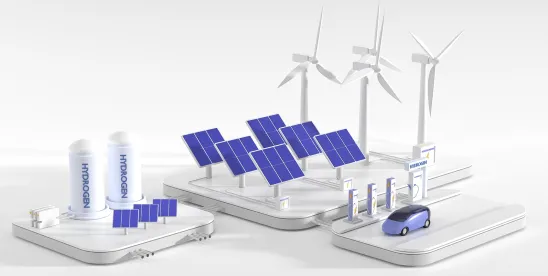We have received a number of inquiries regarding the implications of the new solar panels antidumping (AD) and countervailing duty (CVD) investigations. With the ITC just issuing its affirmative preliminary determination, we thought now was an appropriate time to answer these questions. We accordingly are providing: (1) a summary of the new international trade actions, (2) the scope of the investigations, (3) the implications of the filings, (4) information regarding when potentially costly new antidumping and countervailing tariffs could be imposed, and (5) advice regarding how impacted U.S. importers potentially can handle the potential fallout from these potentially costly new tariffs.
The Summary of the Investigation
A group of U.S.-based solar manufacturers have filed AD and CVD petitions with the U.S. Department of Commerce (DOC) and the International Trade Commission (ITC). The petitions were filed by the American Alliance for Solar Manufacturing Trade Committee, which includes U.S. solar manufacturers Convalt Energy, First Solar, Meyer Burger, Mission Solar, Qcells, REC Silicon, and startup Swift Solar. The petitions allege that “potentially illegal trade practices by Cambodia, Malaysia, Thailand, and Vietnam . . . are injuring the U.S. solar industry” and request that substantial AD and CV duties be placed on all imports from these countries.
The filing of these petitions occurs against the backdrop of a prior order that targeted solar panel imports from China. According to the U.S. solar industry, Chinese-owned solar manufacturers have been circumventing preexisting tariffs on Chinese products by routing their solar panels to Southeast-Asian facilities in other countries for minor processing and then claiming the products are no longer Chinese in origin. As a result, in August of 2023, the DOC ultimately found five manufacturers guilty of circumventing the tariffs: Trina Solar, Canadian Solar, BYD Hong Kong, New East Solar, and Vina Solar. At the same time, however, the DOC determined that manufacturers that use non-Chinese wafers — or at least four solar components made outside of China (silver paste, aluminum frames, glass, backsheets, EVA sheets, junction boxes) — would be exempt from the AD/CVD orders. Thus, while the existing China antidumping and countervailing duty orders still significantly restrict imports made using Chinese solar panel parts and components, it is possible for companies outside of China to manufacture products using Chinese components, provided that they follow the four-component rule.
Viewing this as a significant loophole, the American Alliance for Solar Manufacturing Trade Committee brought a new AD and CVD petition against solar manufacturers in Cambodia, Malaysia, Thailand, and Vietnam directly. If this petition results in AD and/or CVD orders, it will result in the imposition of potentially high trade tariffs on solar panels (and certain products containing solar panels) from these countries, regardless of whether they contain any Chinese-origin components.
The Scope of the Investigation
The scope of the petition is designed to cover both completed solar panels and parts and components that can be used to assemble solar panels in many cases. The complete scope is as follows:
The merchandise covered by these investigations are crystalline silicon photovoltaic cells and modules, laminates, and panels consisting of crystalline silicon photovoltaic cells, whether or not partially or fully assembled into other products, including, but not limited to, modules, laminates, panels, and building integrated materials. The investigations cover crystalline silicon photovoltaic cells of thickness equal to or greater than 20 micrometers, having a p/n junction formed by any means, whether or not the cell has undergone other processing, including, but not limited to, cleaning, etching, coating, and/or addition of materials (including, but not limited to, metallization and conductor patterns) to collect and forward the electricity that is generated by the cell.
The subject merchandise may be described at the time of importation as parts for final finished products that are assembled after importation, including, but not limited to, modules, laminates, panels, building-integrated modules, building-integrated panels, or other finished goods kits. Such parts that otherwise meet the definition of subject merchandise are included in the scope of these investigations.
Excluded from the scope of these investigations are thin-film photovoltaic products produced from amorphous silicon (a-Si), cadmium telluride (CdTe), or copper indium gallium selenide (CIGS).
Also excluded from the scope of these investigations are crystalline silicon photovoltaic cells, not exceeding 10,000mm2 in surface area, that are permanently integrated into a consumer good whose function is other than power generation and that consumes the electricity generated by the integrated crystalline silicon photovoltaic cell. Where more than one cell is permanently integrated into a consumer good, the surface area for purposes of this exclusion shall be the total combined surface area of all cells that are integrated into the consumer good.
Merchandise covered by these investigations is currently classified in the Harmonized Tariff System of the United States (HTSUS) under subheadings 8501.61.0000, 8507.20.80, 8541.40.6020, and 8541.40.6030. These HTSUS subheadings are provided for convenience and customs purposes; the written description of the scope of these investigations is dispositive.
The Implications of the Investigations
As noted above, the filing of these investigations follows the imposition of a two-year moratorium under the prior Chinese solar panels orders. This moratorium gave “the Chinese-owned solar manufacturers in these countries time to shift their supply chains,” according to an Alliance for Solar Manufacturing news release. “Companies found to be circumventing the tariffs are not expected to pay tariffs when the moratorium ends in June 2024, because their Southeast Asia-based supply chains mean they are no longer in technical violation as outlined in the circumvention decision.” The petitions stated that the impact of this supply chain shift is already being felt, as many solar producers in Cambodia, Malaysia, Thailand, and Vietnam have shifted to producing and exporting Southeast Asian-origin cells and modules — often using Chinese components — together accounting for 84% of U.S. solar panel imports in the first quarter of 2023.
According to the petitioners, the result has been a glut of imports into the United States, which are counteracting billions of dollars in new U.S. tax incentives that have triggered a solar manufacturing boom in this country. The filing of these actions pits companies that rely on imported solar panels, to serve the green goals of increasing the installations of solar panels, against the green goal of encouraging U.S. production of solar panels.
Petitioners have many advantages when bringing AD or CVD petitions. They get to decide the scope of the action and the timing of when it is brought. They are also able to consult with both the ITC and the DOC prior to bringing the case, and obtain the comments of those agencies on the draft petitions. Various calculation methodologies tend to support higher margins, particularly for non-market economies like Vietnam, and if there is a tie vote at the ITC (which has six Commissioners), then the ITC will issue an affirmative determination. Only by securing four of the six available votes can the U.S. industry gain a negative determination at the ITC. For these and other reasons, the overwhelming majority of filed AD and CVD cases end up with final affirmative determinations, generally at high margins. The same is likely to occur for solar panels as well, just as occurred with the earlier filing against Chinese solar panels.
The Timing of the Investigations
The case will proceed in two phases: (1) the preliminary phase, which likely will result in the imposition of temporary tariffs (known as “provisional measures”), and (2) the final phase, which could result in the imposition of antidumping and countervailing duty orders and the imposition of final tariffs. The preliminary phase ends after both the ITC (which issued its determination on June 7) and the DOC have issued their preliminary determinations. The DOC is expected to issue its CV preliminary determination on September 23 and its AD preliminary determination on November 20. For either determination, the DOC will establish the rate at which provisional measures are imposed, based upon the records of subsidization and dumping before it.
In nearly all cases, the DOC extends its statutory deadlines by the full amount and aligns the AD and CVD determination timelines. Assuming this occurrs, the timeline of the case would be completed on April 4, 2025 (DOC final determination) and May 19, 2025 (ITC final determination). If these determinations are affirmative, then the DOC would issue AD and/or CVD orders approximately one week later.
For importers, the key date is the publication of the results of the DOC preliminary determination, which generally occurs about one week after the DOC reaches its decision. At this time, if the determinations are affirmative — and nearly all AD and CVD investigations result in affirmative determinations — then the DOC will instruct CBP to start collecting provisional measures (special tariffs) on all entries. Thus, importers of record likely will see an immediate impact from these investigations long before they are completed.
Coping Measures for Importers of Solar Panels
Because of the high chances that these investigations will lead to the imposition of costly provisional measures and tariffs, importers need to take steps now to prepare themselves for this likelihood. Steps to consider include the following:
- Evaluate whether to act as an importer of record.Although trade remedy actions are aimed at foreign manufacturers and exporters, the duties imposed actually are collected from the importer of record as a percentage of the ad valorem (value) of each entry of the subject merchandise. Importers should carefully evaluate where they are acting as the importer of record of goods that potentially fall within the scope of the solar panel investigations.
- Line up alternative supply sources.The entire point of filing AD and CVD actions is to drive down imported supply of the subject goods while driving up their prices. When provisional measures come into play, there often will be major upheavals within the market. Lining up alternative sources before that occurs can be important if there are unexpected withdrawals from the market.
- Establish contingency measures in long-term supply agreements.Any long-term supply contracts should address tariff-related issues for solar panels, including who pays any duties, whether the possibility of increasing tariffs is addressed, and whether the parties have the right to terminate the contract based on the imposition of unanticipated duties. Force majeure clauses may or may not meet legal requirements for contract termination on the basis of unanticipated duties. Companies concerned about unexpected duties are better served by drafting tariff-specific contingency measures.
- Consider whether goods that incorporate solar panels are potentially covered.As detailed above, the scope of the solar panel cases covers solar panels “whether or not partially or fully assembled into other products, including, but not limited to, modules, laminates, panels and building integrated materials.” Although the scope of the investigation provides HTS classifications, products that incorporate solar panels should be evaluated against the written scope of the investigations to evaluate potential coverage.
- Know the correct classification of entries. Duties for antidumping and countervailing duty tariffs are imposed based on the physical description of the merchandise, not the HTS classification, which is given for convenience only. If CBP determines goods should have been declared to be subject to an antidumping duty order, it will impose the duties even if the HTS classification declared or believed to be true indicated otherwise. In any situation where entries are in a gray area, importers should pay special attention to get the classification correct and determine whether the good falls within the scope of the order. If certainty is not possible through self-classification, importers should consider filing a request for a scope ruling, which results in the DOC issuing a definitive ruling as to whether the goods are within the scope of an order.
- Be aware of potential duty deferral or avoidance strategies. Because AD and CVD rates can be high, importers also should consider whether there are customs strategies that can minimize duties. These include the following:
- Consider holding products in a bonded warehouse.Bonded warehouses are buildings or secured locations in which products with duties can be stored or altered without paying the duties for a maximum of five years. If the products are exported, destroyed under CBP supervision, or withdrawn from consumption in the U.S., no duty is owed on the products.
- Duty drawback. A duty drawback is a refund or remission of a customs duty, fee, or internal revenue tax previously imposed. The refunds occur when the product is exported from the United States or destroyed. This is a complex process, as it involves imports and exports, but for certain types of transactions it can offer real duty savings.
- Foreign trade zone (FTZ). A foreign trade zone is a secured location in or near CBP ports where no tariffs apply while the product sits in the FTZ. The product can be stored, exhibited, assembled, manufactured, or processed in this zone without any duties being applied until when the goods leave the FTZ and enter the official U.S. Customs territory (i.e., are sold into the U.S. market). If the goods are sent into another country, then the duties would never be paid.
- Temporary importation under bond (TIB). An importer may post a bond for twice the amount of the duties and then must export or destroy the imported items within a specified time or pay damages. Depending on the type of transaction, using a TIB may lead to duty savings.
Some less-scrupulous exporters will misclassify their goods, such as by claiming different product attributes or classifications than in fact exist, or by claiming an erroneous country of origin. Duties are paid, however, by the importer of record — not the manufacturer. Foreign manufacturers in the countries subject to these investigations will have an incentive to try to claim their products are from other countries or otherwise fall outside the scope of these investigations. Any importer noticing red flags that indicate potential circumvention should check into it before CBP does.






 />i
/>i

